Also known as “man o’ war birds”, frigatebirds are large tropical seabirds with wide wingspans and forked tails.
There are five species: Ascension, Christmas Island, Great, Lesser and Magnificent, and of these, only the Great and Magnificent varieties are native to the United States’ coastal regions, while the Lesser, Christmas Island and Ascension types are limited to specific regions in the southern hemisphere.
The pterodactyl-like silhouette of a Magnificent frigatebird is a common sight in the skies above Florida’s coasts and offshore islands, and we’ll be taking a look at the bird’s presence in and range throughout the state.
So if you’re interested in learning more about these soaring seabirds, then we’ve got all the information you’ll ever need to know right here!
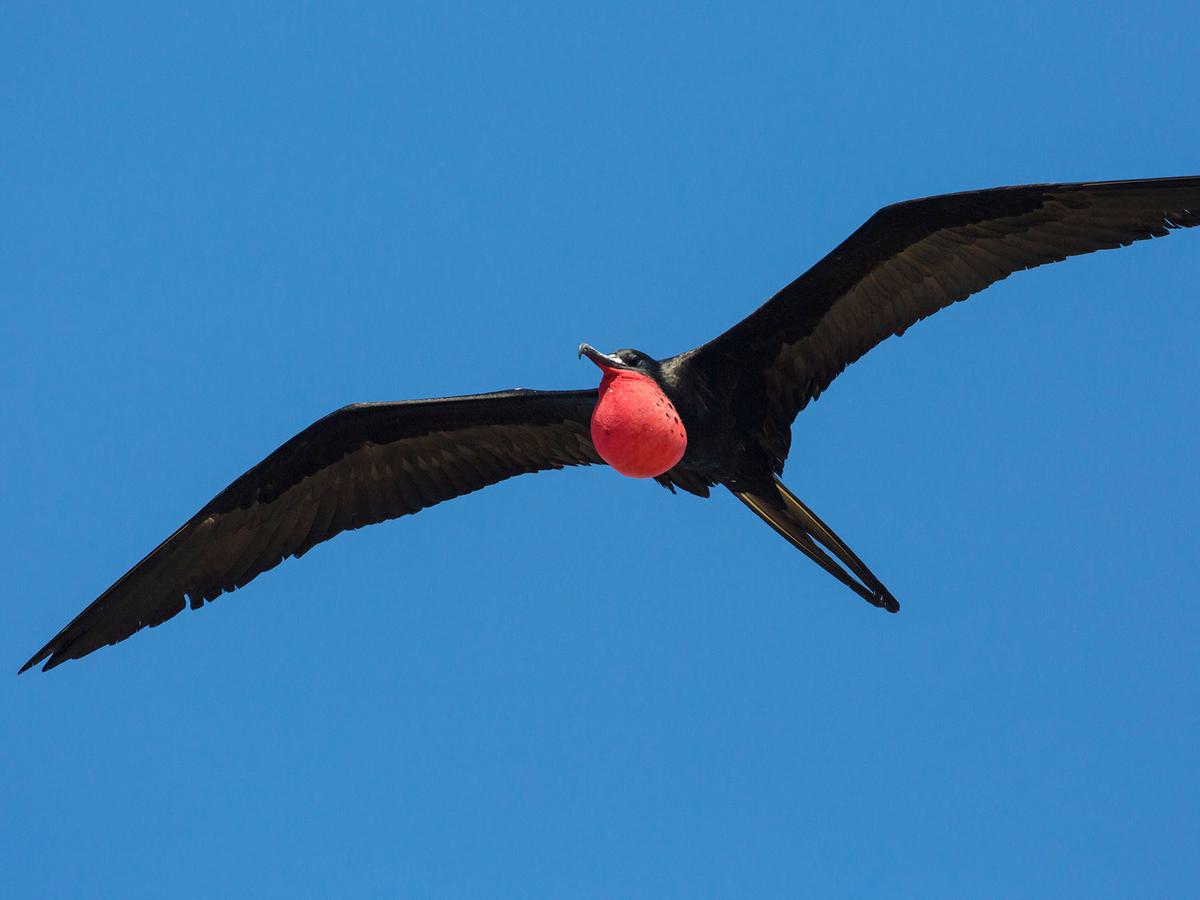
The Magnificent Frigatebird is the only species of Frigatebird that can be found in Florida
Are there Frigatebirds in Florida?
Of the five extant frigatebird species, only one has a presence in Florida – the Magnificent frigatebird.
Until the 1980s, a sizable colony of breeding Magnificent frigatebirds made their home in the uninhabited Marquesas Keys islands, to the west of Key West. The colony was impressive, with up to around 250 pairs breeding there annually.
The first records of frigatebirds at the site date from 1969 and the Marquesas Keys colony thrived for more than 25 years, until numbers began to fall. The decline is thought to have been caused by the presence of human activity, with fishing and boaters in the waters around the islands.
By 1988, the Marquesas Keys colony had fallen to around 50 pairs and the following year had been fully abandoned. Around the same time, 40 pairs were observed to breed for the first time at Long Key, in the Dry Tortugas. The Dry Tortugas site has since expanded to around a few hundred pairs.
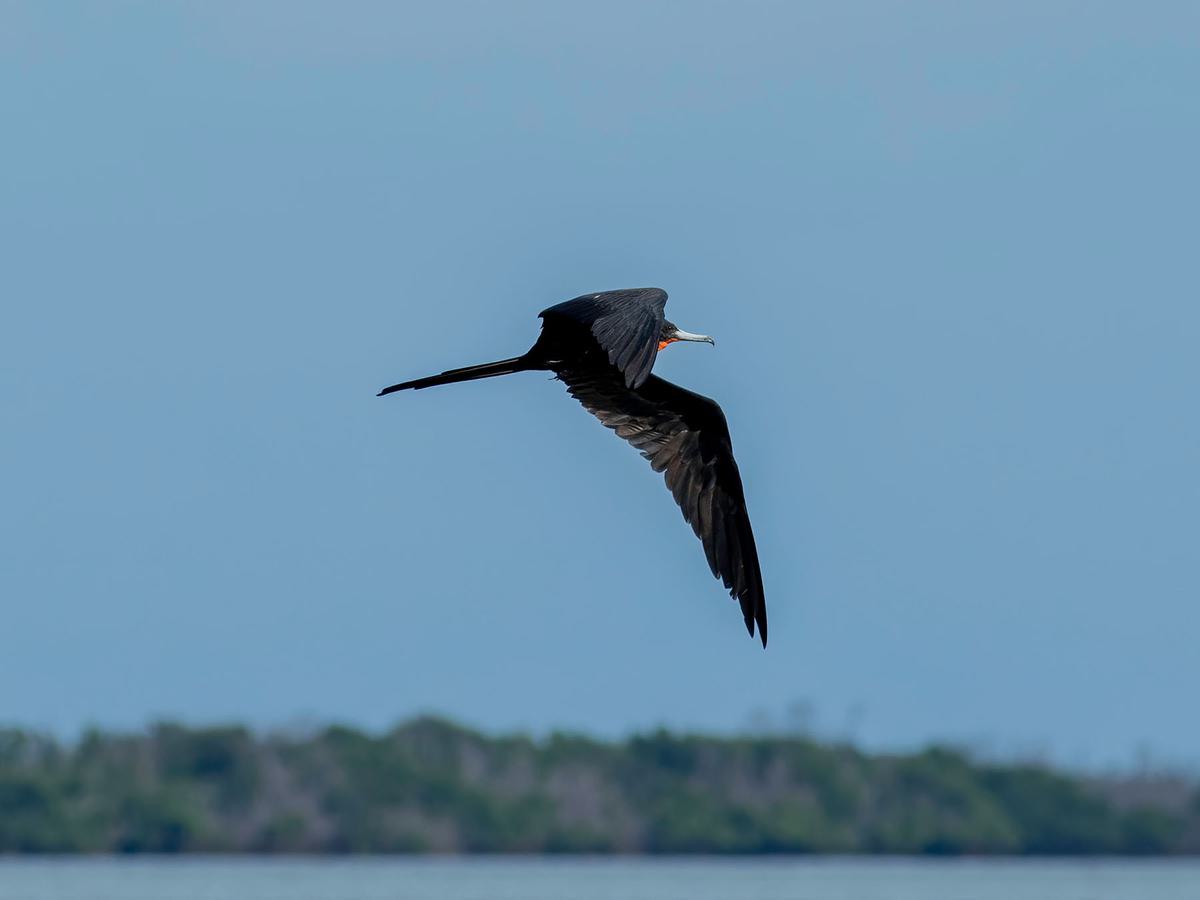
A Magnificent Frigatebird flying over the water in the Florida Keys
Where do Frigatebirds live in Florida?
Florida’s breeding frigatebirds are limited to a specific colony on the Long Key islet, part of the Dry Tortugas. Thousands of non-breeding birds arrive in the state in summer months, establishing roosts as far north as the islands of Cedar Key.
Further south, Magnificent frigatebirds can be seen over the state’s waters and offshore islands all year round.
When do Frigatebirds arrive in Florida?
Some Magnificent frigatebirds are resident in Florida all year round, although their summer population swells significantly with the arrival of thousands of incoming birds from April to September.
Around 7,000 individuals spend summers in the Sunshine State, roosting in large colonies dotted throughout the Florida Keys.
Breeding is limited to a specific colony on Long Key, in the Dry Tortugas, and the breeding season can last for up to two years before the young are fully independent.
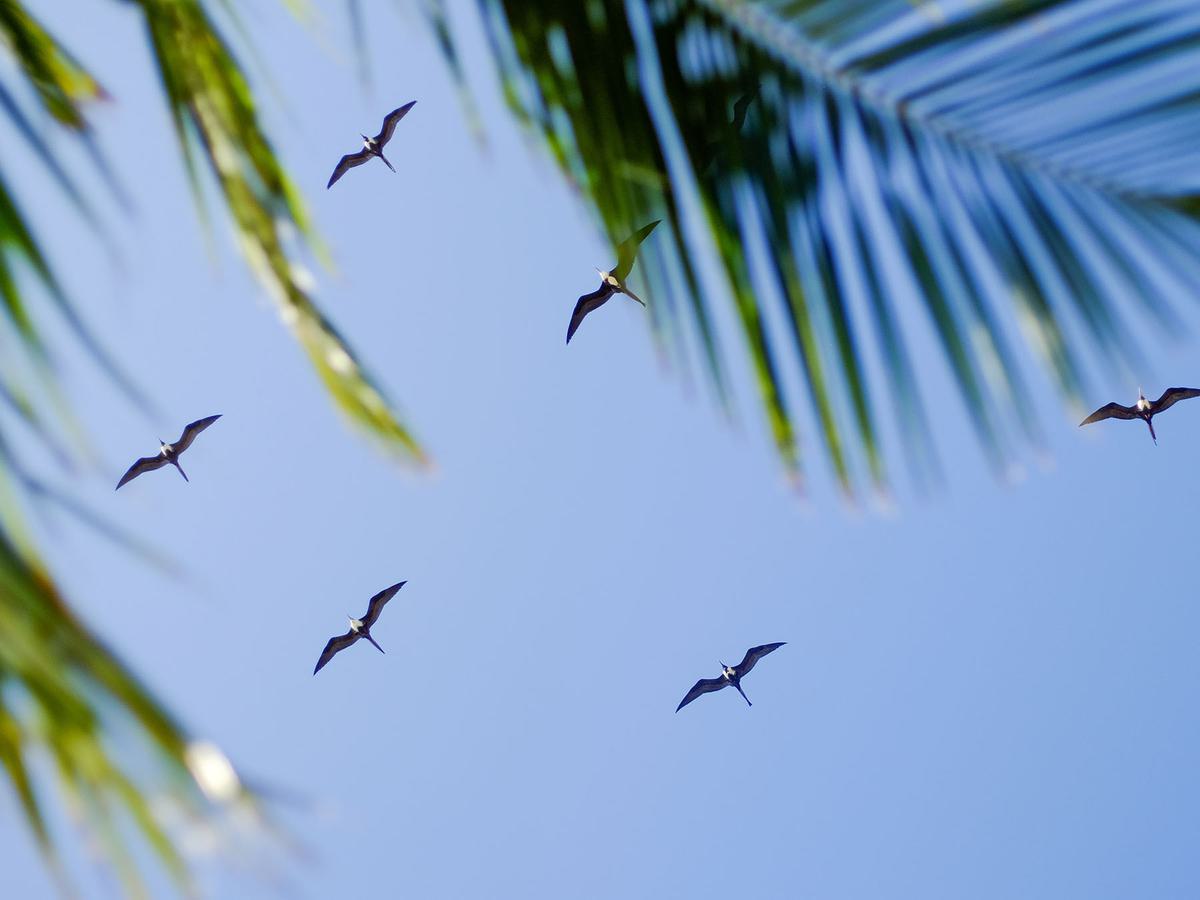
Magnificent Frigatebird flock in flight above Fort Jefferson at Dry Tortugas National Park, Florida
How rare is it to see a Frigatebird in Florida?
Florida’s Magnificent frigatebirds are only found in specific areas of the state, and although up to around 7,000 individuals gather at roosting sites along Florida’s coasts or soar across its surrounding waters, it’s unlikely that you will ever get close enough for a detailed or clear sighting.
Instantly recognizable with their vast tapered wings and perfected skills at gliding on thermals over ocean waters, it’s not unusual to spot a Magnificent frigatebird in the distance, or circling overhead, at heights of up to 750 m (2,500 ft), but it’s far less common to spot an individual bird on land or roosting, except from a great distance.
On rare occasions, bad weather may bring frigatebirds inland temporarily, but generally speaking, they are only present at a number of well-chosen isolated roosting spots and sightings elsewhere further inland in Florida, although not unheard of, are certainly rare.
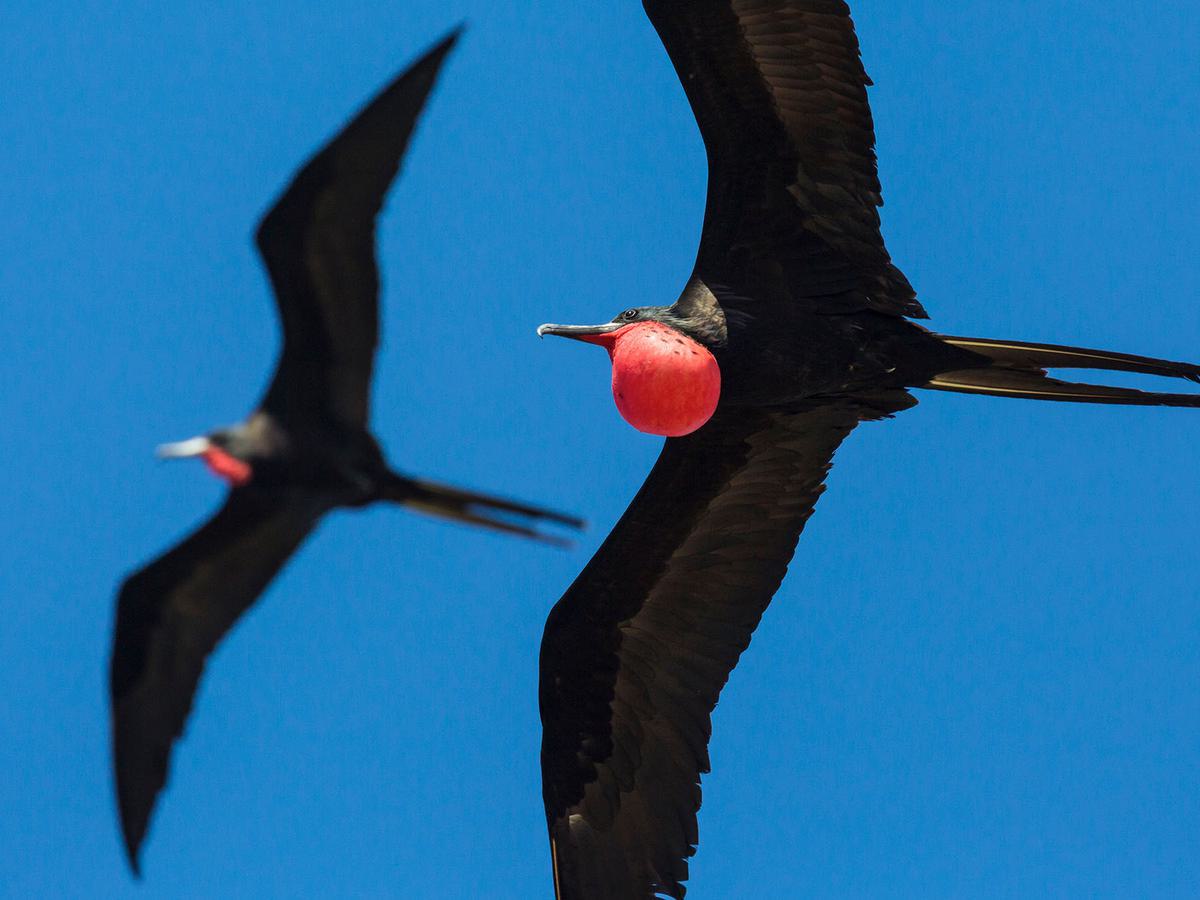
Close up of a pair of Magnificent Frigatebirds in flight
Best places to see Frigatebirds in Florida
One important point to keep in mind is that it’s highly unlikely that you will see a frigatebird up close as they are notorious for keeping a distance from human presence, whether roosting, flying or brooding eggs or young.
During summer months, up to 7,000 individuals roost in trees on some of the Florida Keys’ most remote islands such as those in Cedar Key, the northernmost spot to regularly play host to Magnificent frigatebirds. Long Key, in the Dry Tortugas, is home to the United States’ only breeding colony of frigatebirds, and offers the best chance of seeing one of these truly magnificent gliding giants.
In winter, South Florida is the furthest north that you’re likely to catch sight of a frigatebird, soaring above the coastal areas and offshore islands.
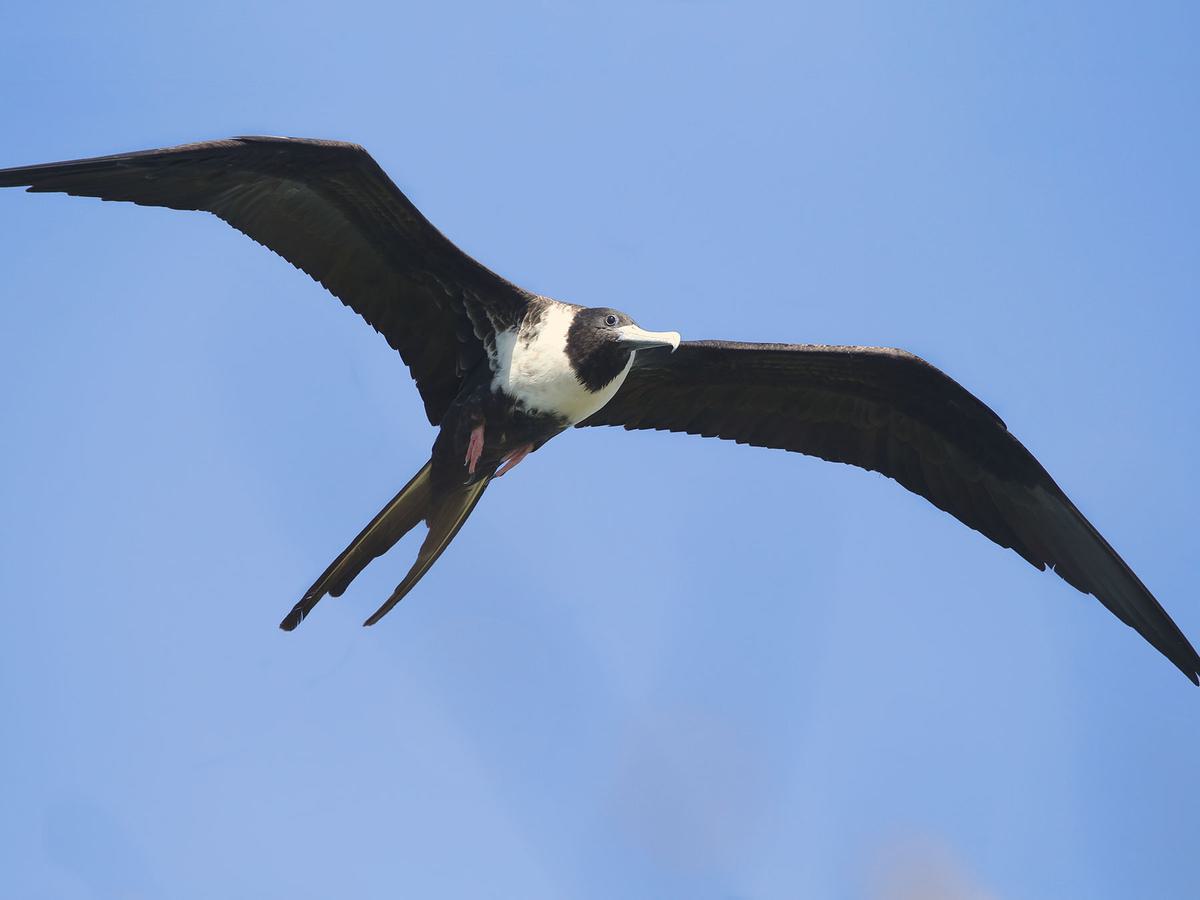
Close up of a female Magnificent Frigatebird in flight
Do Frigatebirds live in Florida all year?
Magnificent frigatebirds are resident in Florida all year round, with numbers increasing in spring and summer in the northern regions of the state, where birds roost in their thousands on offshore islands and atolls in the Florida Keys.
In southern regions of the Florida peninsula, over and around the state’s Atlantic and Gulf coasts, Magnificent frigatebirds are present all year and can be seen scouring marine waters for food from a great height.
Are there Frigatebirds in Florida in Winter?
Frigatebirds are commonly seen in summer months in both northern and southern Florida, along the state’s Gulf and Atlantic coasts. In winter, the species is limited to the waters and islands offshore in the southernmost areas of the state.
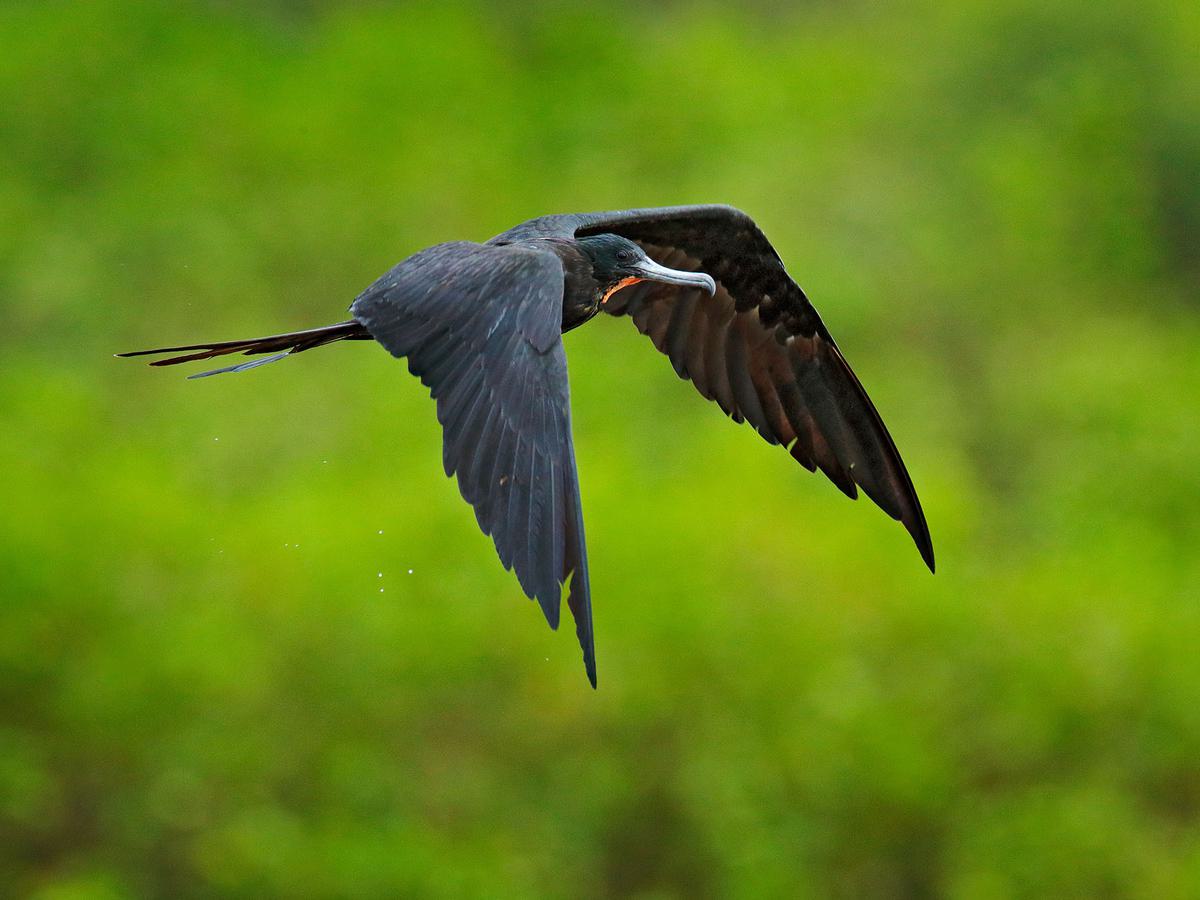
Magnificent Frigatebirds are year-round residents in Florida
Do Frigatebirds nest in Florida?
Magnificent frigatebirds breed in the extreme south of Florida on Dry Tortugas, which is their only U.S. breeding site. While birds may roost in their thousands further north each spring and summer, it is only at this one spot, Long Key, that they are observed to raise their young, with a few hundred breeding pairs.
When do Frigatebirds nest in Florida?
Frigatebirds have one of the longest nesting periods of all bird species, taking between 6 months and 2 years for a chick to become fully independent and no longer in need of parental care or support. Because the nesting period is so extended, no data is available for when the peak laying period for Florida-based frigatebirds might be.
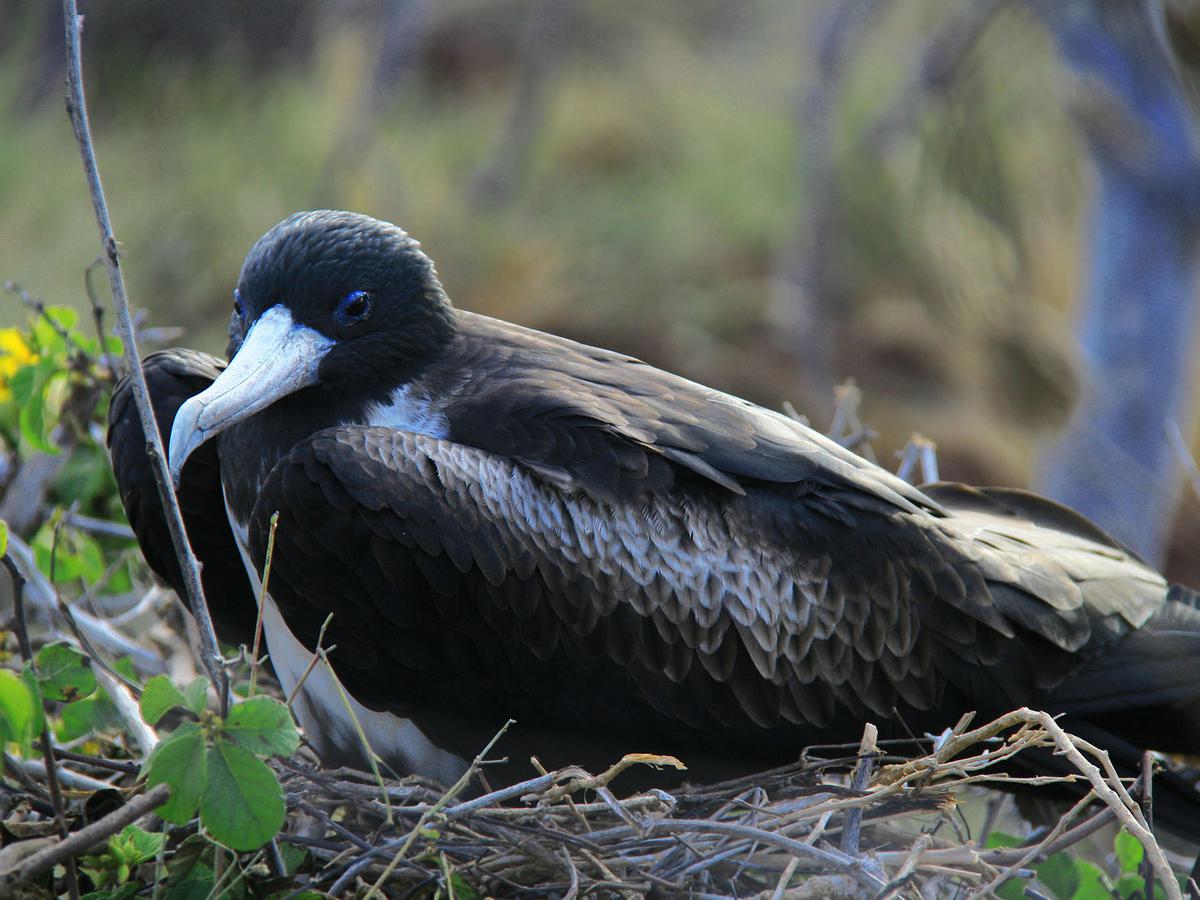
Close up of a female Magnificent Frigatebird sat on the nest
How to attract Frigatebirds in Florida?
It’s not really possible to attract frigatebirds in the traditional sense of the word. They spend large periods of time soaring above tropical marine waters and barely come inland, as they are not particularly adapted for walking on land. They may be seen from a distance overhead in coastal areas, although rarely near enough to get a close enough view.
Their preferred roosting and nesting spots are isolated from human interference, and are typically islets and atolls, with sprawling vegetation.
Frigatebirds will be attracted by a safe location that is favored by other birds of the same species, and within easy reach of waters that offer plenty of sealife to hunt.
